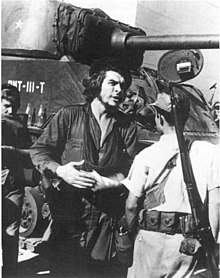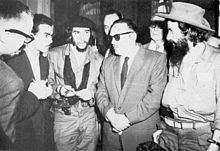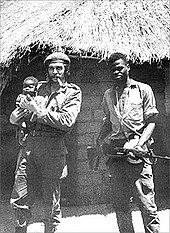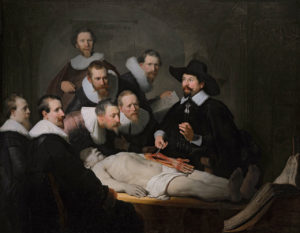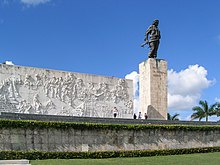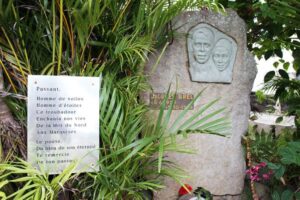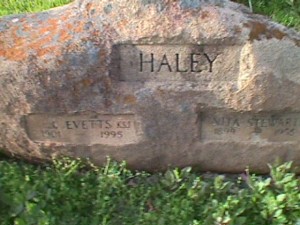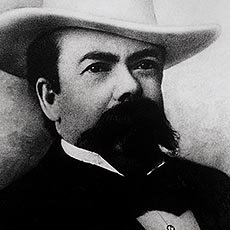 On this day in 1911, distiller and the founder of Jack Daniel’s Tennessee whiskey distillery, Jack Daniel died from blood poisoning in Lynchburg, Tennessee at the age of 62. The infection allegedly set up originally in a toe, which Daniel injured in kicking his safe in anger when he could not get it open early one morning at work (he apparently had trouble remembering the combination). This incident was the subject of a marketing poster used on the London Underground in January 2006, with the line “Moral: Never go to work early.” A common joke that is told during the tour of the distillery is that all Jack had to do to cure his infection was to dip his toe in a glass of his own whiskey to clean it. Born Jasper Newton Daniel on 5 September 1850 in Lynchburg. Daniel never married. Prior to his death he gave the distillery to his nephew and bookkeeper, Lem Motlow.
On this day in 1911, distiller and the founder of Jack Daniel’s Tennessee whiskey distillery, Jack Daniel died from blood poisoning in Lynchburg, Tennessee at the age of 62. The infection allegedly set up originally in a toe, which Daniel injured in kicking his safe in anger when he could not get it open early one morning at work (he apparently had trouble remembering the combination). This incident was the subject of a marketing poster used on the London Underground in January 2006, with the line “Moral: Never go to work early.” A common joke that is told during the tour of the distillery is that all Jack had to do to cure his infection was to dip his toe in a glass of his own whiskey to clean it. Born Jasper Newton Daniel on 5 September 1850 in Lynchburg. Daniel never married. Prior to his death he gave the distillery to his nephew and bookkeeper, Lem Motlow.
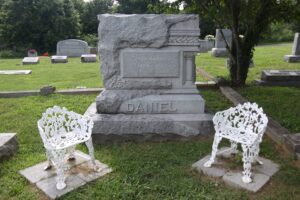 The Final Footprint – Daniel is interred in the Lynchburg City Cemetery. Jack Daniel’s is a brand of sour mash Tennessee whiskey that is one of the highest selling American whiskeys in the world. It is known for its square bottles and black label. It is produced in Lynchburg, by the Jack Daniel Distillery, which has been owned by the Brown-Forman Corporation since 1956. Despite being the location of a major operational distillery, Jack Daniel’s home county of Moore is a dry county, so the product is not available for consumption at stores or restaurants within the county. Although the product generally meets the regulatory criteria for classification as a straight bourbon, the company disavows this classification and markets it simply as Tennessee whiskey rather than as Tennessee bourbon. Frank Sinatra was widely known as a Jack Daniel’s drinker. He was famously buried with a bottle of Jack Daniel’s Old Number 7 in 1998. A line from Dean Martin‘s song I Love Vegas states “I love Vegas, like Sinatra loves Jack Daniels.” The George Jones‘ song “A whole lotta trouble for you” mentions “Jack Daniel’s makes a good whiskey”. The George Thorogood song “I Drink Alone” mentions “So I called up my pal Jack Daniel’s and his partner Jimmy Beam”. In the movie Animal House, the character John “Bluto” Blutarsky can be seen chugging an entire bottle of Old No. 7. In the movie Scent of a Woman, Al Pacino‘s character refers to filling a hotel room with John Daniels. “When you’ve known him as long as I have…” In the movie National Lampoon’s Christmas Vacation, Clark asks his father how he got through the holidays, and he replies “I had a lot of help from Jack Daniel’s”. In the film The Shining, Jack Torrance, played by Jack Nicholson, is seen drinking Jack Daniel’s in the hotel bar, served by the ghostly bartender Lloyd. The French singer Orelsan in “Ils sont cools” includes the line “Passe la tise que je me Jack Danise” (which can be translated as “Give me the alcohol so I can be Jack Danieled”). The cover of the book The Dirt: Confessions of the World’s Most Notorious Rock Band, an autobiography collectively written by the members of the rock band Mötley Crüe, includes a bottle design based on that of Jack Daniel’s whiskey. Hank Williams Jr. mentions Jack Daniels in his song “Dixie On My Mind” singing “The people here don’t sip Jack Daniel’s whiskey, the way they do in that Tennessee mountain land.” The 1979 David Allen Coe song “Jack Daniels if you please” contains the line “Jack Daniels if you please, knock me to my knees”. The Drive-By Truckers song “Dead, Drunk, And Naked” has the lyric “Me and old Jack Daniel’s, become the best of friends. We got all them Baptists to die for our sins. I know the lord is coming. The South will rise again!” The Liane Edwards Band, popular country band from France, directly refers to the brand name in their song “Jack”, ( My Best Friend’s Name is) “Jack” . ” He was born down in Lynchburg… My best friend’s name is Jack, he may be your best friend too, when you drain him to his last drop, I’ll be glad to share my friend with you…” The Charlie Daniels Band album Way Down Yonder depicts bottles of Jack Daniel’s on its cover art. The character Barnes in Oliver Stone‘s 1986 film Platoon is drinking from a Jack Daniel’s bottle when he drunkenly berates Taylor and his group.
The Final Footprint – Daniel is interred in the Lynchburg City Cemetery. Jack Daniel’s is a brand of sour mash Tennessee whiskey that is one of the highest selling American whiskeys in the world. It is known for its square bottles and black label. It is produced in Lynchburg, by the Jack Daniel Distillery, which has been owned by the Brown-Forman Corporation since 1956. Despite being the location of a major operational distillery, Jack Daniel’s home county of Moore is a dry county, so the product is not available for consumption at stores or restaurants within the county. Although the product generally meets the regulatory criteria for classification as a straight bourbon, the company disavows this classification and markets it simply as Tennessee whiskey rather than as Tennessee bourbon. Frank Sinatra was widely known as a Jack Daniel’s drinker. He was famously buried with a bottle of Jack Daniel’s Old Number 7 in 1998. A line from Dean Martin‘s song I Love Vegas states “I love Vegas, like Sinatra loves Jack Daniels.” The George Jones‘ song “A whole lotta trouble for you” mentions “Jack Daniel’s makes a good whiskey”. The George Thorogood song “I Drink Alone” mentions “So I called up my pal Jack Daniel’s and his partner Jimmy Beam”. In the movie Animal House, the character John “Bluto” Blutarsky can be seen chugging an entire bottle of Old No. 7. In the movie Scent of a Woman, Al Pacino‘s character refers to filling a hotel room with John Daniels. “When you’ve known him as long as I have…” In the movie National Lampoon’s Christmas Vacation, Clark asks his father how he got through the holidays, and he replies “I had a lot of help from Jack Daniel’s”. In the film The Shining, Jack Torrance, played by Jack Nicholson, is seen drinking Jack Daniel’s in the hotel bar, served by the ghostly bartender Lloyd. The French singer Orelsan in “Ils sont cools” includes the line “Passe la tise que je me Jack Danise” (which can be translated as “Give me the alcohol so I can be Jack Danieled”). The cover of the book The Dirt: Confessions of the World’s Most Notorious Rock Band, an autobiography collectively written by the members of the rock band Mötley Crüe, includes a bottle design based on that of Jack Daniel’s whiskey. Hank Williams Jr. mentions Jack Daniels in his song “Dixie On My Mind” singing “The people here don’t sip Jack Daniel’s whiskey, the way they do in that Tennessee mountain land.” The 1979 David Allen Coe song “Jack Daniels if you please” contains the line “Jack Daniels if you please, knock me to my knees”. The Drive-By Truckers song “Dead, Drunk, And Naked” has the lyric “Me and old Jack Daniel’s, become the best of friends. We got all them Baptists to die for our sins. I know the lord is coming. The South will rise again!” The Liane Edwards Band, popular country band from France, directly refers to the brand name in their song “Jack”, ( My Best Friend’s Name is) “Jack” . ” He was born down in Lynchburg… My best friend’s name is Jack, he may be your best friend too, when you drain him to his last drop, I’ll be glad to share my friend with you…” The Charlie Daniels Band album Way Down Yonder depicts bottles of Jack Daniel’s on its cover art. The character Barnes in Oliver Stone‘s 1986 film Platoon is drinking from a Jack Daniel’s bottle when he drunkenly berates Taylor and his group.
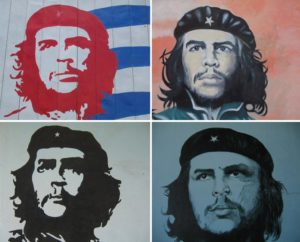 On his day in 1967, Marxist revolutionary, physician, author, guerrilla leader, diplomat and military theorist Che Guevara was executed by gunfire in La Higuera, Vallegrande, Bolivia, at the age of 39. Born Ernesto Guevara on June 14, 1928 in in Rosario, Argentina. A major figure of the Cuban Revolution, his stylized visage has become a ubiquitous countercultural symbol of rebellion and global insignia in popular culture.
On his day in 1967, Marxist revolutionary, physician, author, guerrilla leader, diplomat and military theorist Che Guevara was executed by gunfire in La Higuera, Vallegrande, Bolivia, at the age of 39. Born Ernesto Guevara on June 14, 1928 in in Rosario, Argentina. A major figure of the Cuban Revolution, his stylized visage has become a ubiquitous countercultural symbol of rebellion and global insignia in popular culture.
As a young medical student, Guevara traveled throughout South America and was radicalized by the poverty, hunger and disease he witnessed. His burgeoning desire to help overturn what he saw as the capitalist exploitation of Latin America by the United States prompted his involvement in Guatemala’s social reforms under President Jacobo Árbenz, whose eventual CIA-assisted overthrow at the behest of the United Fruit Company solidified Guevara’s political ideology. Later in Mexico City, Guevara met Raúl and Fidel Castro, joined their 26th of July Movement and sailed to Cuba aboard the yacht Granma with the intention of overthrowing U.S.-backed Cuban dictator Fulgencio Batista. Guevara soon rose to prominence among the insurgents, was promoted to second in command and played a pivotal role in the victorious two-year guerrilla campaign that deposed the Batista regime.
Following the Cuban Revolution, Guevara performed a number of key roles in the new government. These included reviewing the appeals and firing squads for those convicted as war criminals during the revolutionary tribunals, instituting agrarian land reform as minister of industries, helping spearhead a successful nationwide literacy campaign, serving as both national bank president and instructional director for Cuba’s armed forces, and traversing the globe as a diplomat on behalf of Cuban socialism. He played a central role in training the militia forces who repelled the Bay of Pigs Invasion and bringing the Soviet nuclear-armed ballistic missiles to Cuba which precipitated the 1962 Cuban Missile Crisis. Additionally, Guevara was a prolific writer and diarist, composing a seminal manual on guerrilla warfare, along with a best-selling memoir about his youthful continental motorcycle journey. His experiences and studying of Marxism–Leninism led him to posit that the Third World’s underdevelopment and dependence was an intrinsic result of imperialism, neocolonialism and monopoly capitalism, with the only remedy being proletarian internationalism and world revolution. Guevara left Cuba in 1965 to foment revolution abroad, first unsuccessfully in Congo-Kinshasa and later in Bolivia, where he was captured by CIA-assisted Bolivian forces and summarily executed.
Guevara remains both a revered and reviled historical figure, polarized in the collective imagination in a multitude of biographies, memoirs, essays, documentaries, songs and films. As a result of his perceived martyrdom, poetic invocations for class struggle and desire to create the consciousness of a “new man” driven by moral rather than material incentives, Guevara has evolved into a quintessential icon of various leftist movements. The Alberto Korda photograph of him, titled Guerrillero Heroico (shown), was cited by the Maryland Institute College of Art as “the most famous photograph in the world”.
Guevara married Hilda Gadea in Mexico in September 1955, before embarking on his plan to assist in the liberation of Cuba.

Guevara with Gadea at Chichén Itzá on their honeymoon trip
The Final Footprint
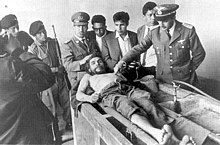
The day after his execution on October 10, 1967, Guevara’s corpse was displayed to the world press in the laundry house of the Vallegrande hospital. (photo by Freddy Alborta)
After his execution, Guevara’s body was lashed to the landing skids of a helicopter and flown to nearby Vallegrande, where photographs were taken of him lying on a concrete slab in the laundry room of the Nuestra Señora de Malta. Put on display, as hundreds of local residents filed past the body, Guevara’s corpse was considered by many to represent a “Christ-like” visage, with some even surreptitiously clipping locks of his hair as divine relics. Such comparisons were further extended when English art critic John Berger, two weeks later upon seeing the post-mortem photographs, observed that they resembled two famous paintings:
Rembrandt’s The Anatomy Lesson of Dr. Nicolaes Tulp and Andrea Mantegna’s Lamentation over the Dead Christ. After a military doctor amputated his hands, Bolivian army officers transferred Guevara’s body to an undisclosed location and refused to reveal whether his remains had been buried or cremated. The hands were sent to Buenos Aires for fingerprint identification. They were later sent to Cuba.
On October 15 in Havana, Castro publicly acknowledged that Guevara was dead and proclaimed three days of public mourning throughout Cuba. On October 18, Castro addressed a crowd of one million mourners in Havana’s Plaza de la Revolución and spoke about Guevara’s character as a revolutionary. Castro closed his impassioned eulogy thus:
If we wish to express what we want the men of future generations to be, we must say: Let them be like Che! If we wish to say how we want our children to be educated, we must say without hesitation: We want them to be educated in Che’s spirit! If we want the model of a man, who does not belong to our times but to the future, I say from the depths of my heart that such a model, without a single stain on his conduct, without a single stain on his action, is Che!
While pictures of the dead Guevara were being circulated and the circumstances of his death were being debated, Che’s legend began to spread. Demonstrations in protest against his “assassination” occurred throughout the world, and articles, tributes, and poems were written about his life and death. Rallies in support of Guevara were held from “Mexico to Santiago, Algiers to Angola, and Cairo to Calcutta”. The population of Budapest and Prague lit candles to honor Guevara’s passing; and the picture of a smiling Che appeared in London and Paris. When a few months later riots broke out in Berlin, France, and Chicago, and the unrest spread to the American college campuses, young men and women wore Che Guevara T-shirts and carried his pictures during their protest marches. In the view of military historian Erik Durschmied: “In those heady months of 1968, Che Guevara was not dead. He was very much alive.”
In late 1995, the retired Bolivian General Mario Vargas revealed to Jon Lee Anderson, author of Che Guevara: A Revolutionary Life, that Guevara’s corpse lay near a Vallegrande airstrip. The result was a multi-national search for the remains, which lasted more than a year. In July 1997 a team of Cuban geologists and Argentine forensic anthropologists discovered the remnants of seven bodies in two mass graves, including one man with amputated hands (like Guevara). Bolivian government officials with the Ministry of Interior later identified the body as Guevara when the excavated teeth “perfectly matched” a plaster mold of Che’s teeth made in Cuba prior to his Congolese expedition. On October 17, 1997, Guevara’s remains, with those of six of his fellow combatants, were laid to rest with military honors in a specially built mausoleum in the Cuban city of Santa Clara, where he had commanded over the decisive military victory of the Cuban Revolution.
#RIP #OTD 1974 industrialist, humanitarian, member of the Nazi Party who saved the lives of 1,200 Jews during the Holocaust by employing them in his factories, Oskar Schindler died of liver failure in Hildesheim, Germany, aged 66. Mount Zion in Jerusalem
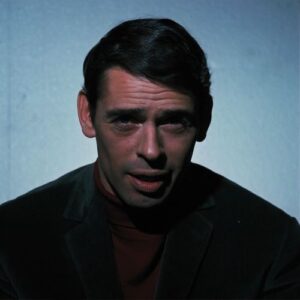 On this day in 1978 singer and actor Jacques Brel died of a pulmonary embolism at hospital Avicenne in Bobigny near Paris at the age of 49. Born Jacques Romain Georges Brel on 8 April 1929 in Schaerbeek, Brussels, Belgium. He composed and performed literate, thoughtful, and theatrical songs that generated a large, devoted following—initially in Belgium and France, later throughout the world. He is considered a master of the modern chanson.
On this day in 1978 singer and actor Jacques Brel died of a pulmonary embolism at hospital Avicenne in Bobigny near Paris at the age of 49. Born Jacques Romain Georges Brel on 8 April 1929 in Schaerbeek, Brussels, Belgium. He composed and performed literate, thoughtful, and theatrical songs that generated a large, devoted following—initially in Belgium and France, later throughout the world. He is considered a master of the modern chanson.
Although he recorded most of his songs in French and occasionally in Dutch, he became an influence on English-speaking songwriters and performers, such as Scott Walker, David Bowie, Alex Harvey, Marc Almond, Neil Hannon, and Rod McKuen. English translations of his songs were recorded by many performers, including Bowie, Walker, Ray Charles, Judy Collins, John Denver, The Kingston Trio, Nina Simone, Shirley Bassey, James Dean Bradfield, Frank Sinatra, and Andy Williams.
Brel was a successful actor, appearing in 10 films. He directed two films, one of which, Le Far West, was nominated for the Palme d’Or at the Cannes Film Festival in 1973. Having sold over 25 million records worldwide, Brel is the third-best-selling Belgian recording artist of all time. Brel married Thérèse “Miche” Michielsen in 1950, and the couple had three children. He also had a romantic relationship with actress and dancer Maddly Bamy from 1972 until his death in 1978.
On 12 October, his body was flown back to the Marquesas Islands, where he was buried in Calvary Cemetery in Atuona on the southern side of Hiva Oa island in the Marquesas, French Polynesia—a few yards away from the grave of artist Paul Gauguin.
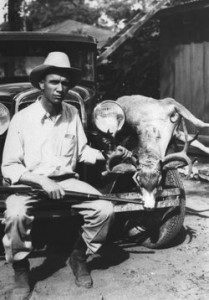 On this day in 1995, University of Texas Ex, political activist, historian, professor, rancher, cowboy J. Evetts Haley died in Midland, Texas at the age of 94. Born James Evetts Haley on 5 July, 1901 in Belton, Texas. I met Mr. Haley and his son Evetts. I have autographed copies of his books, The XIT Ranch of Texas and the Early Days of the Llano Estacado and Charles Goodnight: Cowman and Plainsman. My heroes have always been Cowboys.
On this day in 1995, University of Texas Ex, political activist, historian, professor, rancher, cowboy J. Evetts Haley died in Midland, Texas at the age of 94. Born James Evetts Haley on 5 July, 1901 in Belton, Texas. I met Mr. Haley and his son Evetts. I have autographed copies of his books, The XIT Ranch of Texas and the Early Days of the Llano Estacado and Charles Goodnight: Cowman and Plainsman. My heroes have always been Cowboys.
The Final Footprint –
Haley is buried in Moffatt Cemetery in Moffat, Texas. His grave is marked by a large engraved rock.
************************************************************************************
 And on this day in 2014, actress and comedienne Jan Hooks died from throat cancer at her home in Woodstock, New York, at the age of 57. Born Janet Vivian Hooks on April 23, 1957 in Decatur, Georgia. Perhaps best known for her work on Saturday Night Live, where she was a repertory player from 1986 to 1991, and continued making cameo appearances until 1994. Her subsequent work included a regular role on the final two seasons of Designing Women, a recurring role on 3rd Rock from the Sun and a number of other roles in film and television including on Tina Fey’s NBC show 30 Rock and The Simpsons.
And on this day in 2014, actress and comedienne Jan Hooks died from throat cancer at her home in Woodstock, New York, at the age of 57. Born Janet Vivian Hooks on April 23, 1957 in Decatur, Georgia. Perhaps best known for her work on Saturday Night Live, where she was a repertory player from 1986 to 1991, and continued making cameo appearances until 1994. Her subsequent work included a regular role on the final two seasons of Designing Women, a recurring role on 3rd Rock from the Sun and a number of other roles in film and television including on Tina Fey’s NBC show 30 Rock and The Simpsons.
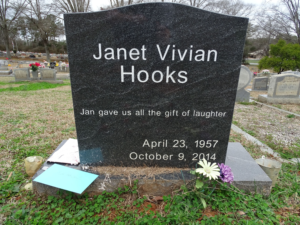 The Final Footprint
The Final Footprint
Her remains were interred in Northview Cemetery in Cedartown, Georgia.
The Simpsons episode “Super Franchise Me” memorialized her on October 12, 2014, with her longtime character Manjula Nahasapeemapetilon honored during the credits.
“Love Is a Dream”
Saturday Night Live paid tribute to Hooks in the third episode of its 40th season on October 11, 2014 where guest host Bill Hader and Kristen Wiig introduced a tribute in which SNL re-aired a short she had filmed for SNL‘s 14th season in 1988 with Phil Hartman, titled Love Is a Dream. This short film had also been repeated as a tribute, following Hartman’s death in 1998. The short is described as “a sweet and melodramatic tribute to the 1948 film The Emperor Waltz“, which was directed by Billy Wilder starring Bing Crosby and Joan Fontaine. The scene casts Hooks as an aging woman who vanishes into her own imagination to sing and share a dance with a long-lost lover (Hartman). The singing voices appear to be dubbed by the actors in the original 1948 film, Crosby and Fontaine. Critics noted after the SNL tribute, that the “Jan Hooks tribute showed that Jan did not need to be funny in order to captivate the attention of her audience”.
Have you planned yours yet?
Follow TFF on twitter @RIPTFF


